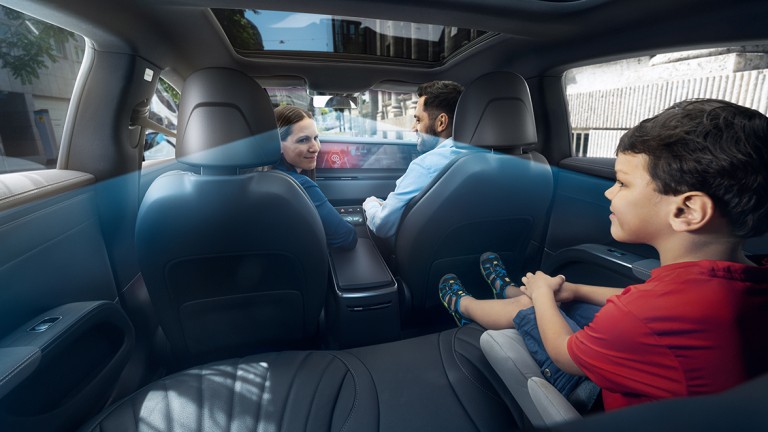How the Bosch driving assist works
The Bosch driving assist is available in four versions, each of which includes various additional features. This gives vehicle manufacturers the greatest possible flexibility when configuring individual solutions for different vehicle segments and areas of application.
Bosch driving assist enables assisted driving functions for speeds of up to 200 km/h (124mph). The basic version combines longitudinal control (ACC) and lane centering assist into one system.
Active lane change can be added to the Bosch driving assist in the speed range of up to 130 km/h (80mph). This requires additional monitoring of side and rear traffic using radar sensors. The driver can prompt a lane change by activating the turn signal or initiate a lane change suggested by the system once the neighboring lane is free. The driver, however, remains responsible for the driving task and must be able to take-over control of the vehicle at any time.
Bosch driving assist also has a hands-free mode. When this additional feature is activated, the driver can take their hands away from the steering wheel once the system has indicated that this is possible. However, the driver remains responsible for driving and for monitoring that the system is functioning correctly. A driver monitoring camera is used to ensure that the driver is paying close attention to what is happening in the surrounding traffic. If the driver gets distracted, warnings are issued.
The plus version ensures even greater convenience and a more comfortable driving experience. Bosch driving assist keeps an overview, even in heavier traffic and confusing situations. With an all-around near-field view, the vehicle can respond to objects in its immediate surroundings.
Bosch driving assist premium goes even further. With its 360° band of cameras, the possible use cases are expanded from highway driving to urban and rural areas as well.


















